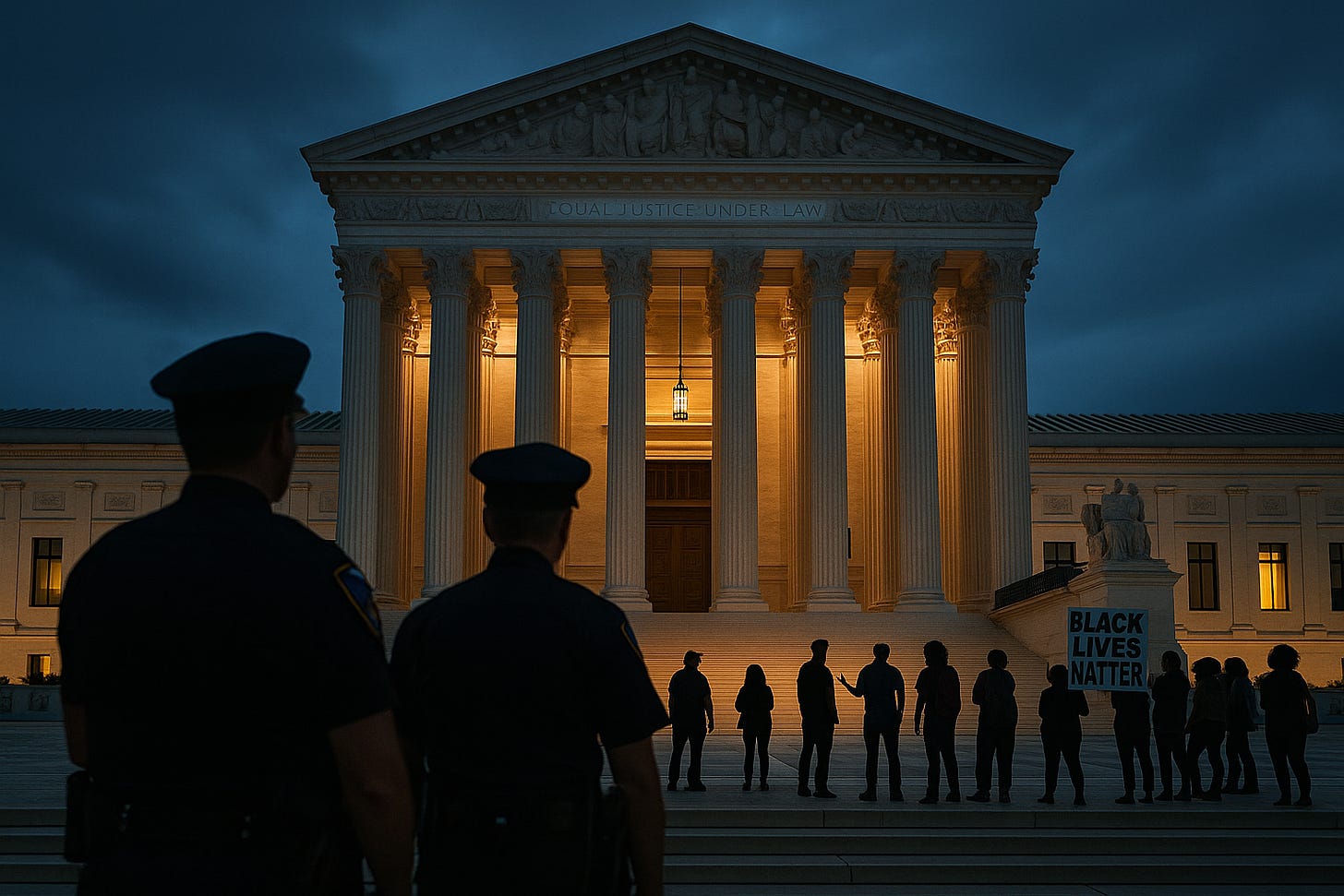Measuring Amicus Impact in Barnes v. Felix
With 25 amicus briefs on the merits only a select few would have an oversized impact on the justices' output.
When the Supreme Court agreed to hear Barnes v. Felix, it set the stage the term’s most consequential Fourth Amendment ruling focused on police accountability. At issue was whether courts can assess an officer’s use of deadly force by focusing narrowly on the “moment of threat” or whether judges must consider the full chain of events that led to the encounter. The decision had the potential to affect everything from traffic stops to officer training—and dozens of outside voices lined up to be heard.
In high-stakes cases like this, amicus briefs on the merits—those filed by outside groups not directly involved in the litigation—can have an outsized impact. Civil rights advocates, state governments, police associations, and legal scholars all weighed in, hoping to shape how the justices saw the legal and real-world stakes. But not all briefs are created equal. Some shift the conversation. Others fade into the background.
This analysis takes a deep dive into all 25 merits stage amicus briefs submitted in Barnes, scoring each one based on how persuasive, timely, strategically smart, and influential it was in the Court’s decision.1 This article looks at everything from whether the justices cited the brief to how well it aligned with the Court’s reasoning. Then it ranks them, graphs the results, and maps out who really made a difference in this closely watched case.
A Look at the Briefs
Amicus Brief of The Rutherford Institute
Filing Party: The Rutherford Institute
Date Filed: November 19, 2024
Supported Side: Petitioner
Word Count: Approx. 7,800
Counsel of Record: Angela M. Liu, Dechert LLP
Additional Counsel: John W. Whitehead, William E. Winters (The Rutherford Institute); Peter J. McGinley, Christopher J. Merken, Steven Oberlander, Shane Sanderson, Luke D. Yamulla (Dechert LLP)
Core Metrics (Total: 28/60) [Cited by the Court: 0, Influence on Outcome or Reasoning: 8, Achieving Desired Result: 10, Precedent Alignment: 10]
This brief was not cited by the Court in its opinion or at oral argument. However, its argument that the moment-of-threat doctrine improperly narrows the Fourth Amendment’s “totality of the circumstances” test was clearly aligned with the Court’s central holding. The brief’s systematic critique of circuit splits and emphasis on the doctrine’s incompatibility with broader constitutional reasoning mirrors themes in the majority’s analysis.
Qualitative and Structural Metrics (Total: 20/25) [Writing Quality: 11, Unique Contribution: 6, Oral Argument Echoes: 0, Centrality: 3]
The brief is well-written, clearly organized, and legally sound. It stands out for drawing comparisons to other areas of constitutional and procedural law, including Miranda, First Amendment jurisprudence, and equitable doctrines like unclean hands, highlighting the analytical inconsistency of the moment-of-threat approach. While these connections were not picked up directly in oral argument or opinion text, they offered a distinct and thoughtful expansion of the legal framework.
Strategic and Technical Factors (Total: 17/20) [Cross-Ideological Appeal: 4, Support by Other Briefs: 4, Timeliness/Relevance: 4, Technical Accuracy: 3, Strategic Framing: 2]
The brief was strategically crafted to resonate with institutional legitimacy concerns, portraying the moment-of-threat doctrine as analytically indefensible across legal traditions. Its persuasive force lay in drawing broader constitutional and doctrinal parallels, though its formal tone and breadth slightly diluted its impact as a field-specific advocacy piece.
Total Score: 65/105
Evaluation Summary:
The Rutherford Institute’s amicus brief mounted a principled, structurally rigorous attack on the moment-of-threat doctrine by contextualizing it as incompatible not only with Fourth Amendment precedent but with constitutional law’s broader reliance on totality-based analysis. While it did not shape the Court’s decision directly, it strengthened the intellectual case against the Fifth Circuit’s approach and reinforced the Petitioner’s position through multi-layered constitutional reasoning.



